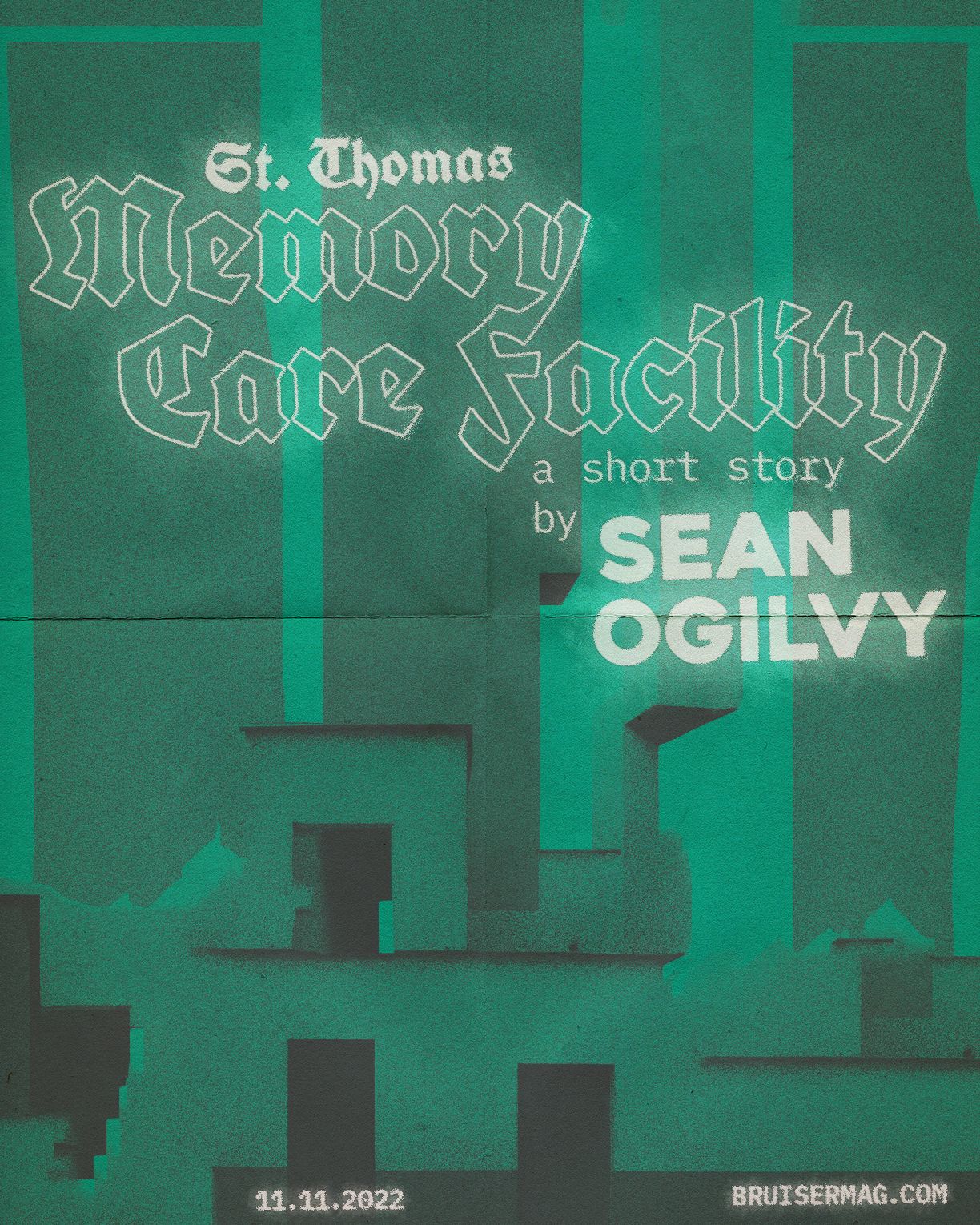The bridge of Walter’s nose is terminally scarred and bleeding from where his glasses have cut him after walking into his door each morning. Every day he energetically awakens as if he had not been confined to the St. Thomas Memory Care facility. He stands naked from his bed and carefully slips into his furred moccasin slippers. The heavy door to his room almost never sees him coming.
Betty Anne’s sisters have not been to see her in months, though one of the sisters lives a mere twenty-seven minute drive down 70 highway. The fact makes no difference to Betty Anne, as she’s found all of the company she needs in Walter, who’s hand she gently, fraily holds in the anteroom of St. Thomas’s recreation room. The pair wait together, surrounded by, yet entirely separated, from the other patients who babble amongst themselves, some to themselves. Walter is eighty-four, Betty Anne is seventy-two.

On a whiteboard the memory care director has outlined all of the planned activities, resting periods, and feeding times for the day, unwavering as scripture. Rosa, a Puerto Rican nurse at St. Thomas, leads patients into the recreation area, a bright room flooded with natural light. It has a wonderful view of the facility’s flourishing garden. The final glimpses of honeybees can be seen outside, before they retreat for the winter. It is late October. Atop the six or so foldable white tables watercoloring paints and canvases have been laid out, for each patient there is one canvas and a pan containing red, blue, yellow, and green paints.
Walter dips his thickest paint brush into a bowl of water, then into the green paint, pressing down the bristles so that they splay out like mortar shrapnel. He sucks the diluted green paint from his brush. Betty Anne coaxes the brush from his mouth with a trembling hand. He smiles at her with all of the love and kind heartedness in the world. Green paint drips from his pale, upturned lips. Betty Anne laughs, clapping her palms on top of her thighs.
Kenny is thirty-two. He suffers from a severe case of young onset dementia. After graduating with a bachelors in art history from the Kansas City Art Institute, Kenny went on to make a comfortable living selling his works at local galleries and art fairs. Kenny was thirty when he fell headlong from Widowmakers Cliff, a thirty-five foot rockface, after the loose gravel beneath his bare feet gave way, his equilibrium in turn faltering. His fiance, Li, searched the murky green lake for his limp body. At the bottom of the lake he lay motionless like a rusty hubcap for nearly two minutes before Li found him and dragged him ashore. During the ensuing two-month long coma, Li abandoned Kenny. They had been together since high school.
Kenny is confidently painting from memory, ‘’The Ninth Wave’’ by Ivan Aivazovsky, although only he himself would be capable of recognizing it as such. Many defining traits of his painting obfuscate it from the source material. For one, the ship and its crew have been made to look like ‘Washington Crossing the Delaware’, complete with an austere looking gentleman perched with his foot upon the boat’s bow. Aside from this, the towering waves froth with sickening yellow seafoam at their apexes, and the sky is a repugnant hue of brown.
A few weeks previous, Kenny’s mother, alongside Kenny’s brother, Don, had come to visit him in the St. Thomas’ Memory Care facility. Kenny had been lackadaisical for nearly a week prior to the visit, that day he was much the same. The sight of his family brought Kenny no discernable joy.
He recognized his brother, although seemingly apathetically. His mother, however, appeared to him as a total stranger, no closer in his mind to the image he kept of her than any other woman picked from a crowd of strangers. “Look what I’ve brought you, Kenny,” his mother said, holding out a fat stack of Architectural Digest magazines. She had collected them from his and Li’s house some time after the accident.
Kenny had loved architecture only second to painting before his accident. Now the only architecture which he saw with pleasure was when he closed his eyes in the dark of his room; towering geometrical structures of neon color, interminably transmorphing into revolutionary combinations of shape and size.
Why would I want these thin little books filled with depictions of buildings I’ll never see in real life?” Kenny asked himself. He looked to Don for some form of reassurance to accept the gift, which he gently granted with a nod and a smile.
For dinner that night, his mother took Kenny and his brother to P.F. Changs. When his mother reached across the table to wipe some bright orange sauce from Kenny’s cheek, then, still not recognizing his own mother, he flung a plate of orange chicken at her, breaking her nose. Blood poured from her nostrils onto her pink corded sweater. Men from around the restaurant stood quickly from their tables, some having seen what had transpired, some only having heard the commotion. A mob of men raced over to Kenny, dinner tables shaking, plates rattling atop of them. His brother tried to intercept them but it was too late. They pulled Kenny from his seat, submitting him, kicking, punching, screaming.
Kenny’s world could no longer adhere to any semblance of rationality. Nothing made sense to him anymore, nor was the world any longer capable of making sense of him. “Did the world ever make any sense?” he would often ask himself. Perhaps God has become demented in his old age. One day we’ll wake up underwater, looking down at the sky beneath our feet.
Email: [email protected]
 Poem: "Celebrate Your Transition Into A Lot" by Suzanne Doogan
Poem: "Celebrate Your Transition Into A Lot" by Suzanne Doogan
 "What Godot Forgot" by Erwin Dink
"What Godot Forgot" by Erwin Dink